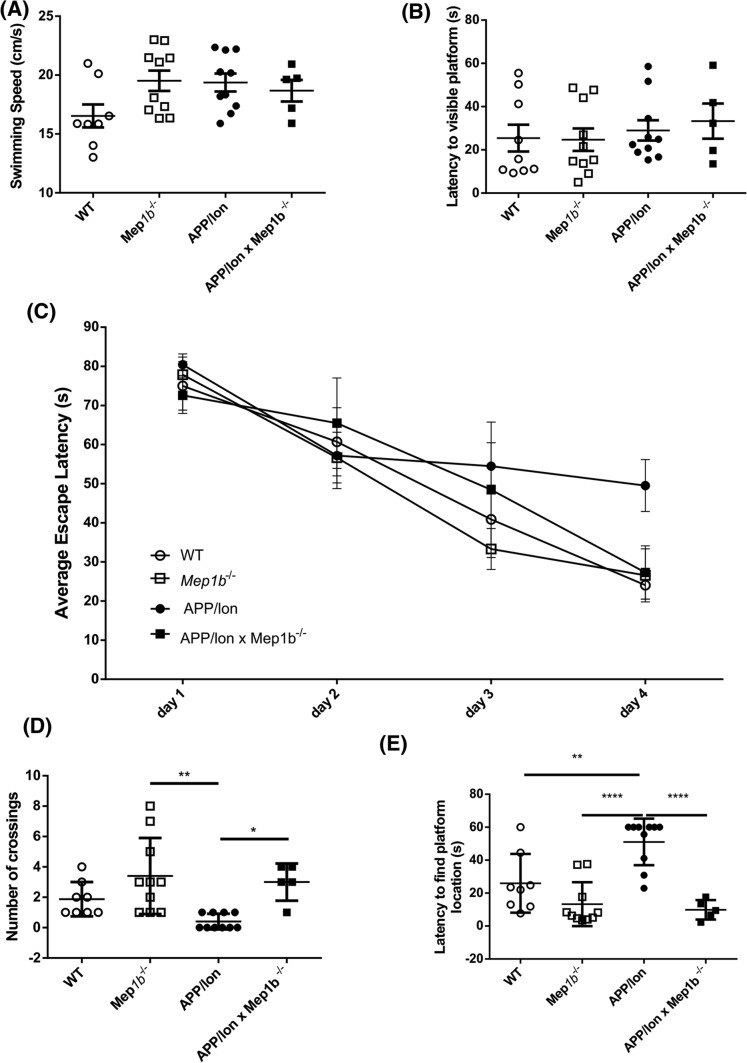Fig. 6.
Meprin β knockout rescues cognitive impairments in APP/lon mice. Spatial learning and memory tests were carried out on 7-month-old APP/lon, APP/lon × Mep1b−/−, Mep1b−/−, and wild-type mice using the Morris water maze setting. A Swimming speed analysis showed no motor impairment in any of the groups. B Latency to find visible platform was evaluated after probe trial and no specific deficits were detected. C The average escape latency in each trial was measured for 4 days and 24 h later all experimental groups were subjected to a probe trial (PT) in which the platform was removed. On day 4, APP/lon showed significant learning deficit compared to WT mice (*p < 0.05) and to Mep1b−/− (*p < 0.05), but not to APP/lon × Mep1b−/− mice. Data shown is the mean ± SEM of four different trials performed on day 4. Statistical analysis performed with one-way ANOVA followed by Tukey’s post hoc test. D Memory was evaluated by measuring the numbers of crossings over the former platform location. APP/lon mice showed significant differences when compared to Mep1b−/− or APP/lon × Mep1b−/− (*p < 0.05, **p = 0.0016). E Latency to reach platform location in all four groups. On PT day, cognitive deficits are prominent in APP/lon when compared to WT (*p < 0.05), Mep1b-/- (****p < 0.0001) and APP/lon × Mep1b−/− mice (***p < 0.0001). Data are presented as mean ± SEM (n = 5–10). Graph shows latency to find platform location in one probe trial

